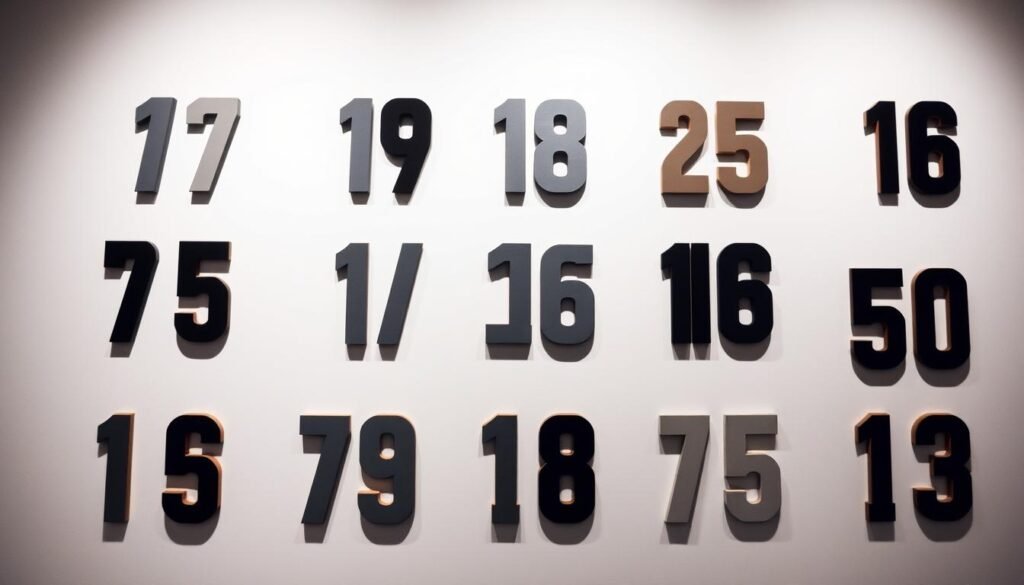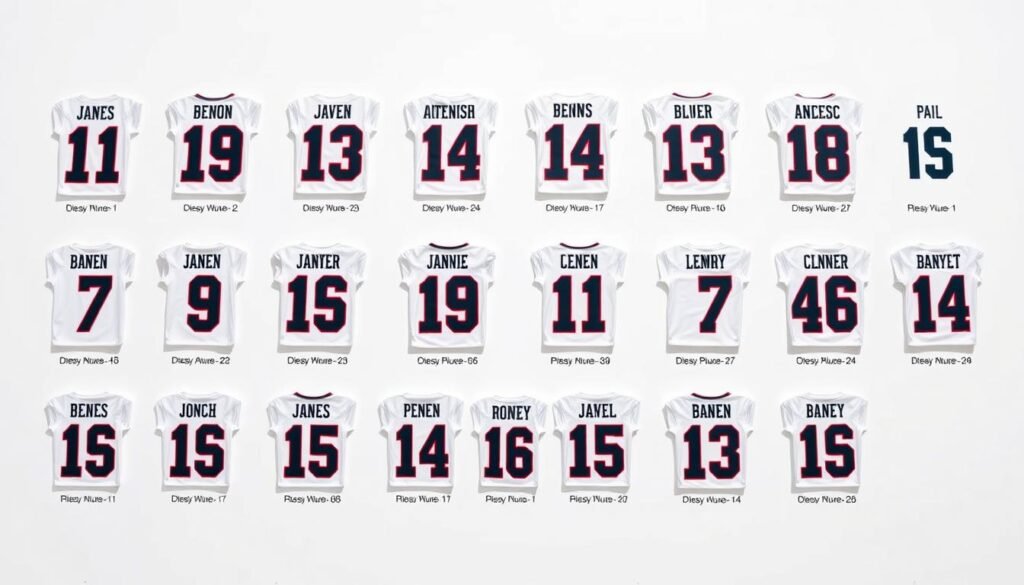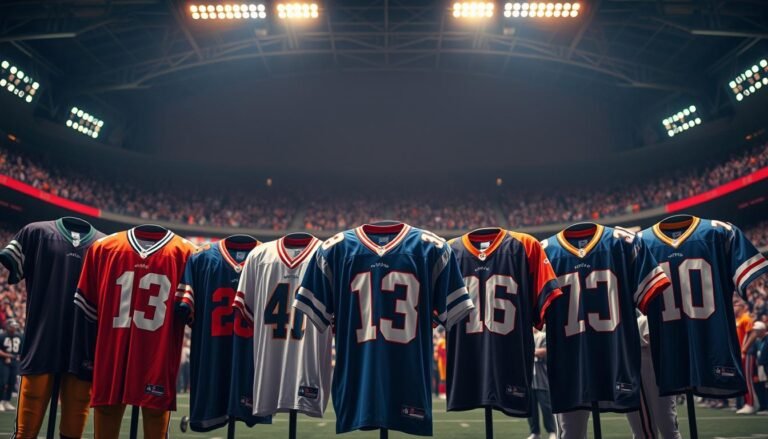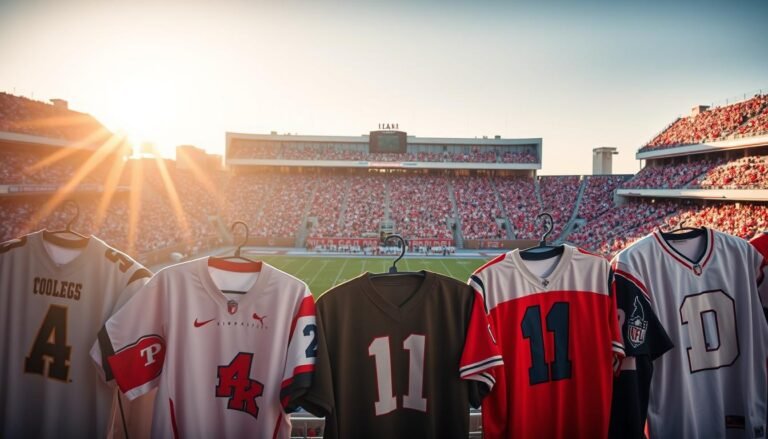The National Football League has a complex set of guidelines governing jersey numbers for different positions on the field. Understanding these rules is essential for appreciating the intricacies of the game.
The history of these regulations dates back to 1973 when the league first introduced a standardized numbering system. Since then, the rules have undergone several changes, reflecting the evolution of the game.
The significance of football jersey numbers extends beyond mere identification; they are an integral part of the game’s culture and strategy. This article will explore the current regulations and the impact of jersey numbers on the game.
Key Takeaways
- The NFL introduced a standardized numbering system in 1973.
- Jersey numbers are governed by specific rules based on player position.
- Understanding these rules enhances appreciation of the game.
- The regulations have evolved over time.
- Jersey numbers play a significant role in football culture and strategy.
The Evolution of NFL Jersey Numbers
The evolution of NFL jersey numbers is a story of standardization and clarity. Initially, football players wore numbers that were not strictly correlated with their positions, leading to confusion on the field.
Early Numbering Systems in Football
In the early days of football, the numbering systems were not standardized, causing confusion for officials, players, and fans. The lack of a uniform system made it difficult to identify players and their positions on the field. The NFL recognized the need for a more organized approach to jersey numbering. As the game gained popularity, the need for standardization became increasingly important.
Standardization of NFL Jersey Numbers
The NFL took the first step towards standardizing jersey numbers in 1952, introducing guidelines to correlate numbers with player positions. However, it wasn’t until 1973 that these rules were rigidly enforced, bringing much-needed clarity to the game. The standardization of NFL jersey numbers has played a crucial role in enhancing the overall fan experience. By assigning specific number ranges to different positions, the NFL made it easier for officials to officiate games and for fans to follow the action on the field.
Why Jersey Numbers Matter in Football
Jersey numbers are more than just a numerical identifier on a player’s back; they play a crucial role in the game of football. These numbers are vital for the smooth operation of the game, affecting both officials and spectators alike.
Identification for Officials and Fans
The primary function of football jersey numbers is to identify players on the field. For officials, this means being able to make accurate calls during the game, as they can quickly identify the players involved in a play. Fans also benefit from clear identification, as it enhances their viewing experience, allowing them to follow the action and track their favorite players more easily.

Position Recognition on the Field
Beyond identification, NFL uniform guidelines dictate that jersey numbers also help in recognizing the positions of players on the field. This is crucial for understanding the game’s strategy and nuances. By knowing the positions, fans and officials can better comprehend the tactics employed by teams, adding depth to the game-watching experience.
The strategic importance of jersey numbers is evident in how they facilitate a clearer understanding of the game, making them an integral part of football.
Understanding NFL Jersey Number Rules
The NFL’s jersey numbering system is a nuanced aspect of the game, influenced by tradition and innovation. To comprehend the current rules, it’s essential to grasp the foundational principles and the recent changes that have shaped the system.
Basic Principles of the Numbering System
The NFL’s jersey number rules are designed to provide a clear and consistent method of identifying players on the field. Traditionally, certain number ranges have been associated with specific positions. For instance, quarterbacks and kickers often wear numbers between 1 and 19, while linemen typically wear numbers between 50 and 79.
The basic principle behind these assignments is to facilitate easy identification for officials, fans, and teammates. By associating certain numbers with specific positions, the NFL aims to enhance the clarity of the game.
2021 Rule Changes and Expansions
In 2021, the NFL introduced significant changes to the jersey number rules, expanding the range of numbers available to certain positions. This move was aimed at giving players more flexibility in choosing their jersey numbers.
What Prompted the Changes
The decision to expand the number ranges was driven by player feedback and the evolving nature of the game. Modern football has seen players taking on multiple roles, and the old numbering system was seen as restrictive. The changes were intended to accommodate this versatility.
How Players Have Responded
Players have generally welcomed the changes, seeing them as an opportunity to either stick with a familiar number or change to a number that holds personal significance. Some notable players have taken advantage of the new rules to switch numbers, often citing personal or superstitious reasons.
The changes have been met with a positive response from the NFL community, with many seeing it as a way to enhance player identity and expression.
The NFL’s jersey number rules continue to evolve, reflecting the dynamic nature of the sport. As the game changes, so too will the rules governing how players are identified on the field.
Offensive Position Number Regulations
The NFL’s jersey numbering system is designed to identify positions on the field. This system helps officials, fans, and teammates quickly recognize the roles of players during a game.
Quarterbacks
Quarterbacks are typically assigned jersey numbers between 1 and 19. This range is reserved for players who lead the offense, including those who may also serve as kick returners or holders on special teams.
Running Backs and Fullbacks
Running backs and fullbacks can wear numbers between 1 and 49 or 80 and 89. This allows for flexibility as players may change positions or take on additional roles during a season.

Wide Receivers and Tight Ends
Similar to running backs, wide receivers and tight ends are also allowed to wear numbers between 1 and 49 or 80 and 89. This reflects their potential to be involved in various offensive plays, including passing and running.
Offensive Linemen
Offensive linemen are restricted to numbers between 50 and 79. This range is designated for players involved in blocking and protecting the quarterback, emphasizing their crucial role in the team’s offensive strategy.
Understanding these regulations is essential for players, coaches, and fans to appreciate the complexity and strategy involved in NFL games.
Defensive Position Number Regulations
Understanding the NFL’s jersey number rules is crucial for defensive players, as these regulations help maintain clarity and consistency across the league.
Defensive Linemen
Defensive linemen are allowed to wear numbers between 50 and 79 or 90 and 99. This rule helps in identifying the positions on the field quickly.
The defensive line is a critical component of a team’s defense, and their jersey numbers play a significant role in how they are perceived by officials, fans, and teammates. The numbers assigned to defensive linemen are part of the NFL’s effort to standardize and simplify the game.
Linebackers
Linebackers have the flexibility to wear numbers between 1 and 59 or 90 and 99. This range allows for a variety of number choices while maintaining the integrity of the numbering system.
Linebackers are often considered the backbone of a defense, and their jersey numbers are an integral part of their identity on the field. The NFL’s rules ensure that these numbers are assigned in a way that is consistent with the overall numbering system.
Cornerbacks and Safeties
Cornerbacks and safeties are typically assigned numbers between 1 and 49. This range is shared with other positions like wide receivers and running backs, highlighting the importance of context in understanding the NFL’s numbering system.
The defensive backfield is a crucial part of any NFL team’s defense, and the numbers worn by these players are an essential aspect of their on-field identity. The NFL’s guidelines ensure that these numbers are used in a way that is consistent and clear.
| Position | Allowed Numbers |
|---|---|
| Defensive Linemen | 50-79, 90-99 |
| Linebackers | 1-59, 90-99 |
| Cornerbacks and Safeties | 1-49 |
The NFL’s jersey number regulations for defensive positions are designed to provide clarity and consistency, making the game more understandable for fans and officials alike.
Special Teams Number Assignments
The NFL has specific jersey number rules for special teams players, including kickers, punters, and long snappers. These players have unique roles, and their jersey numbers reflect this. Understanding these rules is essential for appreciating the intricacies of NFL roster management.
Kickers and Punters
Kickers and punters are typically assigned numbers between 1 and 19. This range is usually reserved for players who handle the ball or are involved in key decision-making on the field. The specificity of their numbers helps in quick identification during games, especially in situations where they are on the field.
Long Snappers and Other Specialists
Long snappers and other specialists on special teams may wear a variety of numbers, depending on their secondary roles or positions they can play. For instance, a long snapper who can also play linebacker might wear a number in the 50s, aligning with linebacker numbering rules. This flexibility allows teams to manage their roster numbers more effectively. The NFL’s guidelines provide a framework for these assignments, ensuring consistency across teams.
In summary, the NFL’s jersey number rules for special teams players provide a structured yet flexible system. This system accommodates the unique roles of kickers, punters, long snappers, and other specialists, ensuring that each player has a number that reflects their position and capabilities on the field.
Exceptions and Special Cases in NFL Jersey Number Rules
The NFL’s jersey number rules are not without exceptions, as certain circumstances permit players to retain numbers that don’t conform to standard regulations. These exceptions are crucial for understanding the full scope of how jersey numbers are managed in the league.
Grandfathered Numbers
One significant exception involves “grandfathered numbers.” Players who were already wearing a number that was later deemed outside the acceptable range for their position were allowed to continue wearing that number. This rule was particularly relevant during the 2021 rule changes, where certain numbers were reassigned or restricted. For instance, players who had been wearing numbers outside their positional range before the rule change were permitted to keep their existing numbers.
Position Changes and Number Retention
Another exception occurs when players change positions. If a player switches to a position that has a different number range, they may be allowed to retain their original number under certain conditions. This flexibility is essential for accommodating players who develop new skills or are moved to different roles within their teams.
Preseason and Practice Squad Numbers
The NFL also has specific rules regarding jersey numbers for players on the practice squad or those participating in preseason games. These players may wear different numbers than they would during the regular season, providing teams with more flexibility in managing their rosters. Understanding these nuances is vital for grasping the complexities of NFL roster management.
By acknowledging these exceptions, fans and players alike can better understand the intricacies of NFL jersey number rules and how they impact the game.
The Cultural Significance of NFL Jersey Numbers
NFL jersey numbers have become an integral part of the sport’s culture, symbolizing tradition, identity, and sometimes, superstition. These numbers are not just identifiers for players on the field; they carry a rich history and emotional significance that resonates with fans and players alike.
Iconic Numbers in NFL History
Certain numbers have become iconic in NFL history, synonymous with legendary players and memorable moments. For instance, the number 12 is often associated with Tom Brady, one of the greatest quarterbacks in NFL history. According to a study on sports numbers, some numbers gain cultural significance due to the players who wore them. Iconic numbers are often a reflection of a player’s achievements and their impact on the game.
Retired Numbers and Team Traditions
Many NFL teams retire numbers as a tribute to their most iconic players, creating a tradition that honors their contributions to the team. For example, the Green Bay Packers retired the number 4 for Brett Favre, and the New England Patriots retired the number 12 for Tom Brady. These retired numbers serve as a reminder of the players’ achievements and the impact they had on their respective teams.
Player Superstitions and Number Preferences
Some players have superstitions or personal preferences when it comes to their jersey numbers. For instance, a player might choose a number based on a significant date or a personal ritual. This aspect of NFL culture highlights the personal and sometimes quirky side of the sport. A table summarizing some iconic NFL numbers and their associated players is provided below:
| Number | Player | Team |
|---|---|---|
| 12 | Tom Brady | New England Patriots |
| 4 | Brett Favre | Green Bay Packers |
| 23 | Michael Jordan | Chicago Bulls (honored by NFL teams) |
The cultural significance of NFL jersey numbers is a multifaceted phenomenon that encompasses history, tradition, and personal identity. As the NFL continues to evolve, the stories behind these numbers will remain an integral part of the sport’s heritage.
Conclusion
The NFL’s jersey number rules play a crucial role in the game, providing clarity for officials, players, and fans. Understanding these rules enhances our appreciation of the game and its nuances.
The NFL uniform guidelines dictate that each position has specific number ranges, from quarterbacks to defensive linemen. These NFL jersey number rules have evolved, with changes in 2021 expanding number options for certain positions.
As the NFL continues to evolve, it will be interesting to see how these football jersey numbers rules adapt. The cultural significance of certain numbers and the traditions surrounding them will likely continue to be an integral part of the game.
By grasping the intricacies of NFL jersey number rules and NFL uniform guidelines, fans can deepen their understanding and enjoyment of football.



